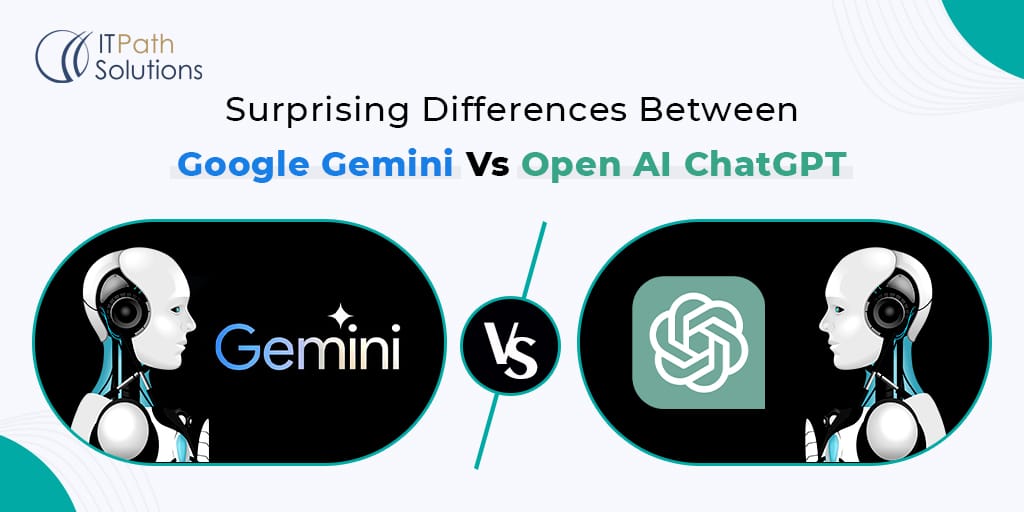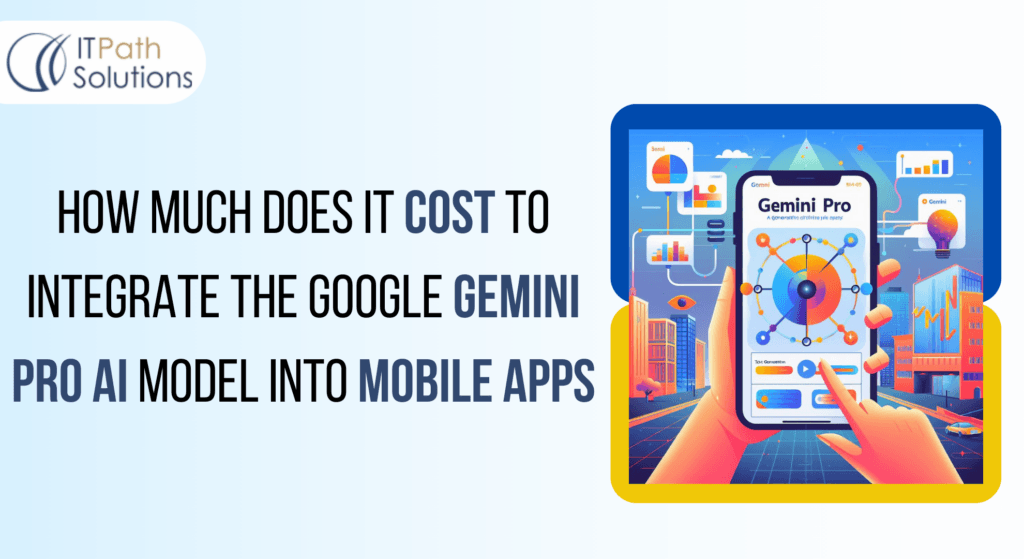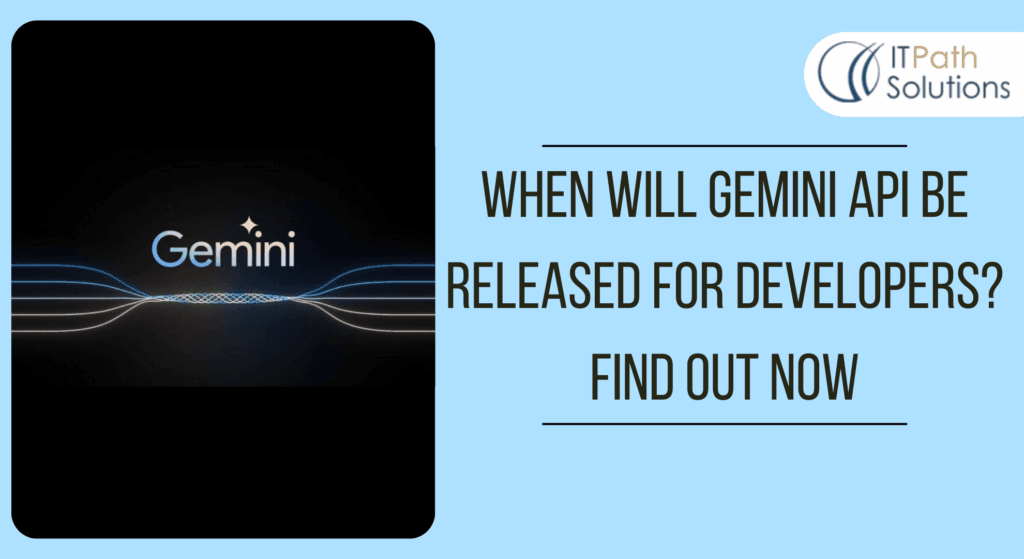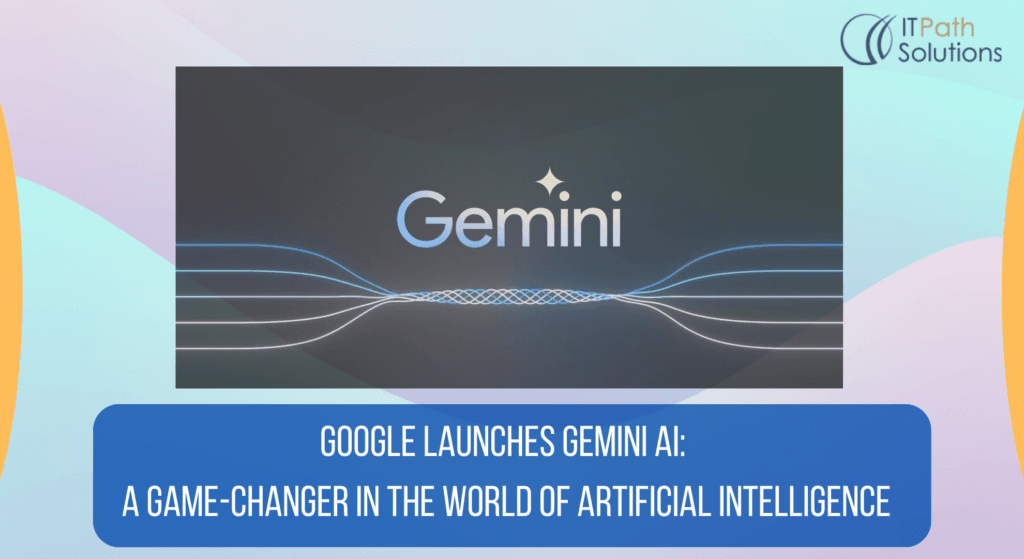Surprising Differences Between Google Gemini Vs Open AI ChatGPT
Gemini AI
In the ever-evolving landscape of technology, two prominent players have emerged, each making significant strides in the field of artificial intelligence. Google Gemini and OpenAI ChatGPT stand as powerful examples of how AI is transforming the way we interact with machines. While both are impressive in their own right, understanding the nuances that set them apart is crucial for anyone looking to leverage their capabilities.
Gemini is a multimodal AI model that can process text, images, and audio, while ChatGPT is a competent language model. Gemini comes in three versions (Ultra, Pro, and Nano) to serve different use cases, and one area in which it appears to beat GPT-4 is its ability to perform advanced math. However, ChatGPT is better at handling advanced tasks like translation, summarization, and handling nuanced text. While both models are smart, Gemini has a bit of an edge because it’s like it’s more powerful than ChatGPT. Nonetheless, some users have reported underwhelming results with Gemini, and others have noted that ChatGPT feels more human.
In this blog post, we will delve into the key differences between Google Gemini and OpenAI ChatGPT, exploring their features, applications, and the impact they have on the AI landscape.
Key Differences Between Google Gemini Vs Open AI ChatGPT
Origin and Purpose
Google Gemini and OpenAI ChatGPT have distinct origins and purposes. Google Gemini, developed by Google, is a part of Google’s AI research division. It focuses on natural language processing and understanding, aiming to enhance various Google services by integrating advanced AI capabilities. On the other hand, OpenAI ChatGPT is developed by OpenAI, a research organization dedicated to artificial general intelligence. ChatGPT is a language model designed to generate human-like text responses and facilitate natural language conversations.
Training Approaches
One of the fundamental differences lies in the training approaches adopted by Google Gemini and OpenAI ChatGPT. Google Gemini is trained using a combination of supervised learning, reinforcement learning, and unsupervised learning. This multi-faceted approach allows the model to learn from various data sources, including human-generated examples and self-generated data through reinforcement learning. OpenAI ChatGPT, on the other hand, is primarily trained using a technique known as unsupervised learning, where the model learns from a vast dataset containing parts of the internet.
Model Architecture
The architecture of an AI model plays a crucial role in determining its capabilities. Google Gemini uses a transformer-based architecture, similar to OpenAI ChatGPT. Both models leverage the transformer architecture’s ability to process and understand contextual information, making them effective in handling diverse language tasks. However, the specifics of the architecture, such as the number of parameters and the training data, differ between the two, contributing to variations in their performance.
Use Cases and Applications
The applications of Google Gemini and OpenAI ChatGPT span a wide range of use cases. Google Gemini is integrated into various Google services, enhancing functionalities like search, translation, and natural language understanding. It plays a crucial role in improving user experience by providing more accurate and contextually relevant results. OpenAI ChatGPT, on the other hand, is often employed in conversational AI applications, chatbots, and virtual assistants. Its ability to generate coherent and contextually appropriate responses makes it a valuable tool for human-like interactions.
Accessibility and Availability
Another factor that sets Google Gemini and OpenAI ChatGPT apart is their accessibility and availability. Google Gemini is often integrated into Google’s existing services, making its capabilities accessible to users through products like Google Search and Google Translate. In contrast, OpenAI ChatGPT is made available through APIs, allowing developers to integrate its capabilities into a wide range of applications and services. This difference in accessibility influences the way developers can leverage these models in their projects.
Ethical Considerations
Ethical considerations are increasingly important in the development and deployment of AI models. Both Google Gemini and OpenAI ChatGPT are subject to ethical considerations, but their respective organizations approach these issues in distinct ways. Google has its own set of ethical guidelines and policies for AI development, focusing on fairness, transparency, and accountability. OpenAI is known for its commitment to responsible AI use and has implemented measures to prevent malicious use of its models, including the deployment of safety mitigations.
Limitations and Challenges
Despite their impressive capabilities, both Google Gemini and OpenAI ChatGPT have limitations and face challenges. Google Gemini, like any AI model, may struggle with ambiguous queries and may not always produce the desired results. OpenAI ChatGPT, while proficient in generating human-like text, can exhibit issues such as verbosity and a lack of fact-checking. Understanding these limitations is crucial for users and developers to make informed decisions about the suitability of these models for specific tasks.
Beyond the Benchmarks: Choosing the Right Tool for the Job
Deciding between Gemini and ChatGPT isn’t a simple binary choice. The ideal LLM depends on your specific needs and priorities. Here’s a quick guide:
- Choose Gemini if: You require multimodal content creation, value contextual accuracy and efficiency, and prefer an open-source approach.
- Choose ChatGPT if: You focus primarily on text generation, need a proven solution with extensive applications, and prioritize accessibility and user base.
Remember, both LLMs are still under development, constantly learning and evolving. Their capabilities will undoubtedly expand in the future, blurring the lines and potentially rendering this comparison obsolete.
The Future of Language Generation: A Collaborative Canvas
Instead of viewing Gemini and ChatGPT as rivals, consider them as complementary forces shaping the future of language generation. Their unique strengths can work in tandem, pushing the boundaries of creative expression and communication. Imagine a world where Gemini’s visual flair enhances ChatGPT’s narrative prowess, or where ChatGPT’s textual dexterity fuels Gemini’s multimodal storytelling. The possibilities are endless, and the true winners will be those who embrace the collaborative potential of these linguistic powerhouses. As we move forward, let’s focus on harnessing the combined potential of Gemini and ChatGPT to paint a brighter, more expressive future with words and visuals alike.
On this collaborative canvas, we anticipate a convergence of modalities, with language models effortlessly integrating text, images, and potentially audio and video. Real-time interactions will become the norm, giving rise to dynamic conversations that mimic the fluidity of human communication. Personalization and context awareness will take center stage, as language models delve into the intricacies of individual preferences, adapting communication styles, and offering tailored content. The future holds a commitment to explainability and transparency, addressing concerns related to bias and ethical considerations as these models become more sophisticated.
In essence, the future of language generation invites us to explore a canvas where technology and human creativity harmonize, opening doors to possibilities that redefine the way we communicate, create, and collaborate.
Here are some other interesting aspects to consider:
- Ethical Considerations: Both LLMs raise concerns about potential misuse, such as generating misinformation or perpetuating biases. It’s crucial to develop responsible AI practices to ensure their ethical deployment.
- The Rise of Hybrid LLMs: The future might hold hybrid models that combine the strengths of both text-centric and multimodal LLMs. This could lead to even more powerful and versatile language generation tools.
- The Democratization of AI: As LLMs become more accessible and user-friendly, the power of language creation will be within reach of a wider audience. This democratization has the potential to revolutionize various fields, from education to art.
In conclusion, Google Gemini and OpenAI ChatGPT represent significant advancements in the field of artificial intelligence, each with its own strengths and applications. The differences in their origin, training approaches, model architecture, use cases, accessibility, ethical considerations, and limitations contribute to the rich tapestry of the AI landscape. As technology continues to evolve, it’s essential to stay informed about these developments to harness the potential of AI responsibly and effectively. Whether you’re a developer exploring AI integration or a curious user navigating the digital realm, understanding the distinctions between Google Gemini and OpenAI ChatGPT provides valuable insights into the ever-expanding world of artificial intelligence.
 Healthcare
Healthcare  Education
Education  Real Estate
Real Estate  Logistic
Logistic  Fitness
Fitness  Tourism
Tourism  Travel
Travel  Banking
Banking  Media
Media  E-commerce
E-commerce  Themes
Themes
 Plugins
Plugins
 Patterns
Patterns




